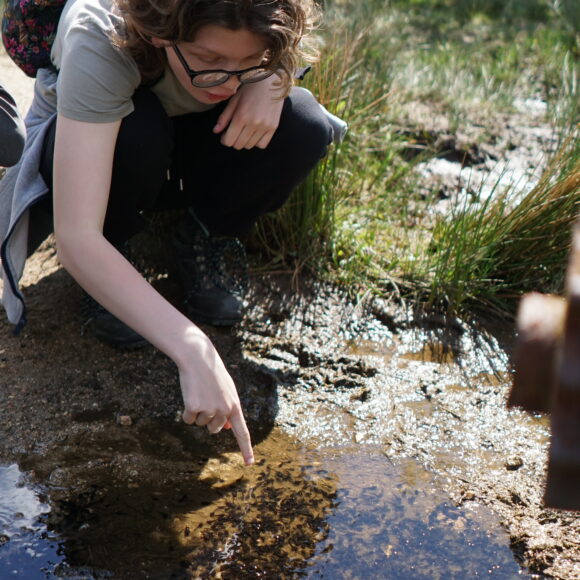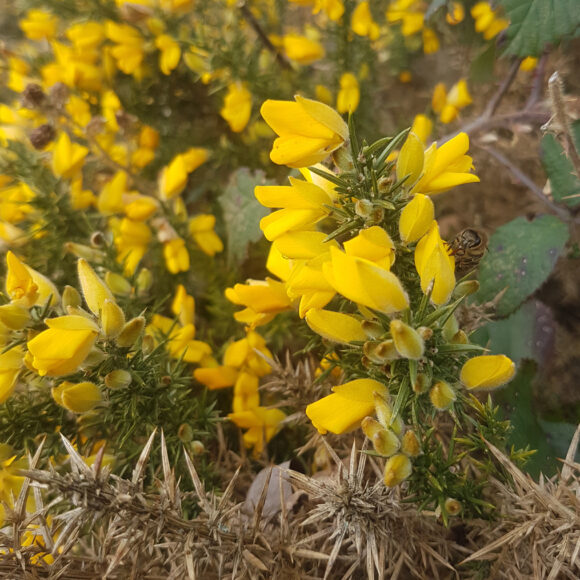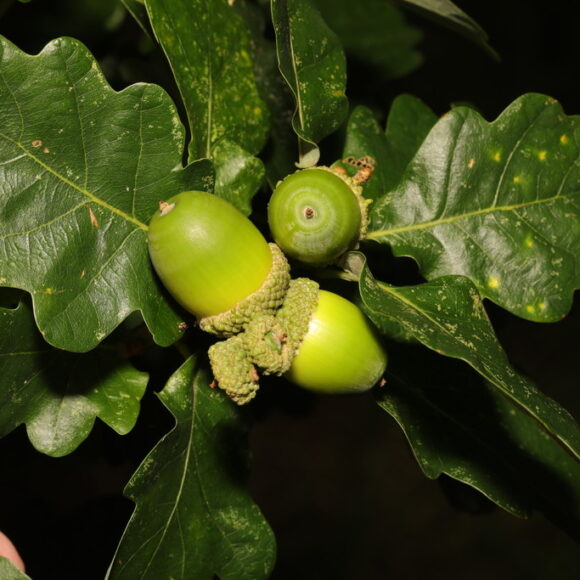
Look Wild: Dartmoor Up Close
-
Date posted: 19/05/2022
-
Time to read: 6 minutes

Spring is a fantastic time to explore your National Park and get closer to wildlife. On Dartmoor the team have just hosted a LookWild weekend to shine a light on it’s special wildlife looking at mires, moors and woodland. Over the course of the Look Wild weekend more than 100 people took part investigating Dartmoor alongside volunteers and experts offering a helping hand to record over 100 different species. Using the iNaturalist app participants were able to start identifying wildlife really quickly, here’s a few important species that were found…

Bogs and mires
Dartmoor, like many of our National Parks is home to important bogs and mires which lock up carbon and are rich in biodiversity. Working around the edge of a valley mire investigators soon discovered a wide range of plants which are adapted to the harsh acidic conditions. These incredible plants cannot get enough nutrients through their roots from the harsh conditions they grow in so they have a special adaptation. Their leaves are fringed with sticky tendrils which grab onto unfortunate insects. Once captured the insect is slowly digested providing important food for the plant.
Observation © elinorn

Sphagnum mosses
This moss is a bog builder; slowly building layers of fresh peat as it grows and locking up carbon at the same time. Sphagnum moss can be incredibly absorbent holding 20 times its own weight in water.
Observation © James-Windle

Heathland species
On Dartmoor there are two types of gorse- the prickly green bushes that cover the moors in many places. It’s fairly easy to tell the two gorses apart. The common gorse known in the southwest as furze flowers through the spring until around July filling the air with the smell of coconut and summer holidays whereas the smaller western gorse comes into flower and can be seen from July onwards.
Observation © A-Emmerson

Temperate rainforest
Dartmoor is not just open moorland and dramatic views of granite tors. Over time water has carved its way across the moor producing magnificent river valleys cloaked in woodland which is home to important wildlife. These damp humid woodlands are wonderfully rich in mosses, ferns and lichens and are rightly known as our temperate rainforests . There are two types of oak tree native to the UK- the pedunculate oak and the sessile oak. In the wooded valleys of Dartmoor sessile oak is dominant. You can identify it by its stalked leaves in spring and stalkless acorns in autumn.
Observation © Steve_Mcwilliam

Pied flycatcher
Every year the pied flycatcher makes an epic journey flying thousands of miles from its winter home in west Africa, over the Sahara desert back to the oak woodlands of western Britain. Its arrival coincides with the trees bursting into leaf and the subsequent bounty of caterpillars on which to feed its chicks.
Observation © A_Emmerson

Red wood ant
In the woodlands you can also find huge wood ant nests built from twigs and woodland debris which the ants have foraged. These nests work as carefully climate controlled nurseries where the young ants are raised. Some ants from the nest work as farmers looking after colonies of aphids high in the canopy and “milking” them for honeydew which is their main food. Don’t get too close though they can nip and even squirt formic acid at unwanted guests.
Observation © Steve_Orridge
If you’ve been inspired to get out into nature, you can share any photos or observations with us and get featured on our social or our newsletter! Send your observations to connect@nationalparks.uk
Join i-Naturalist and start identifying nature near you today! LookWild is a brilliant citizen science project that helps contribute to our data and knowledge of wildlife and habitat health across the UK.
This Blog was written by Andy Bailey, Outreach and Interpretation Officer at Dartmoor National Park.